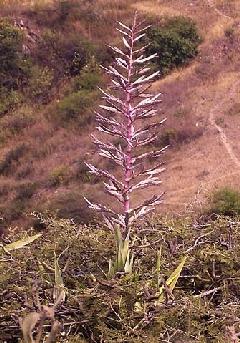
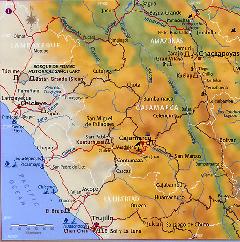
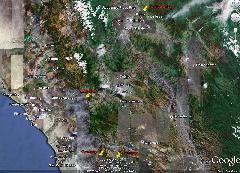
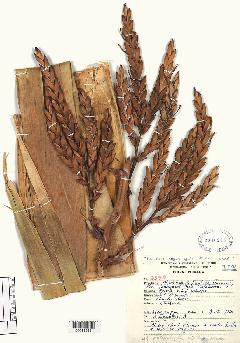
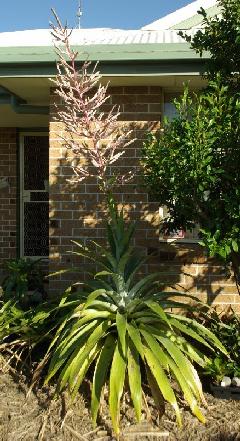
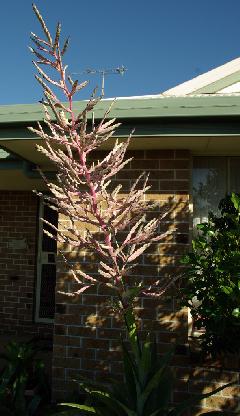
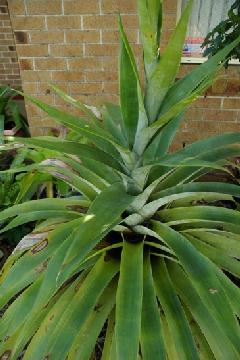
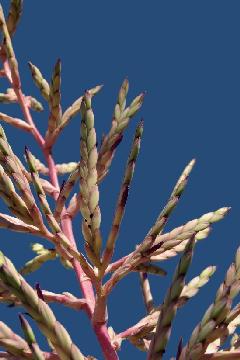
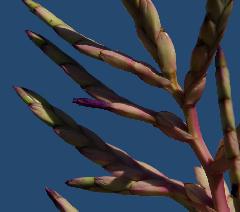
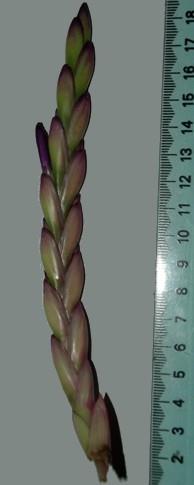
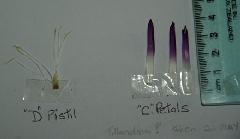
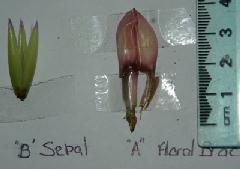
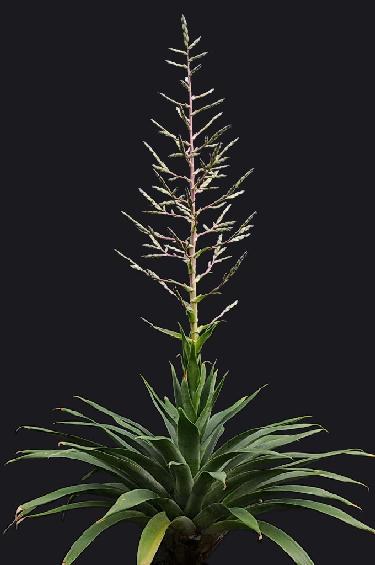
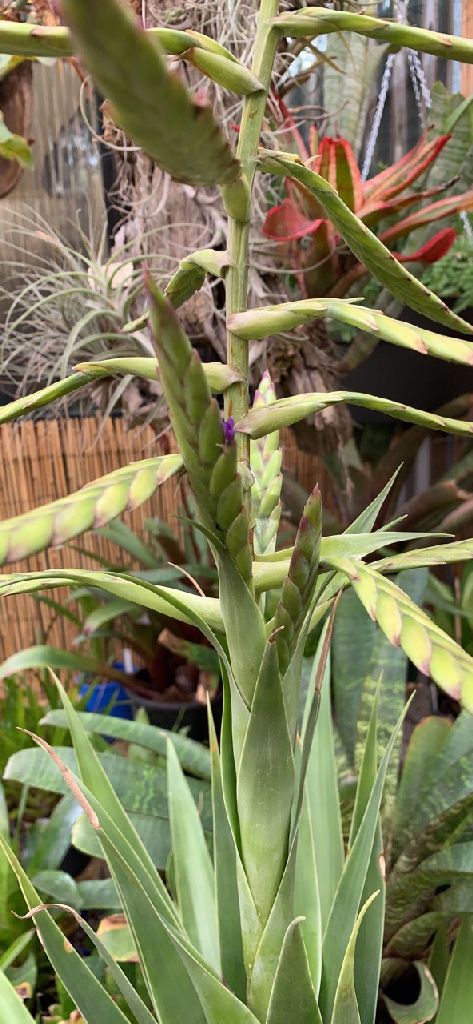
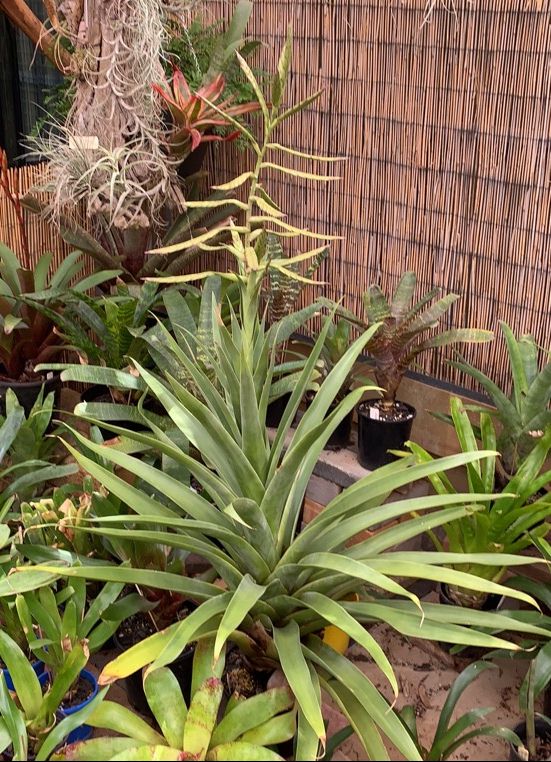
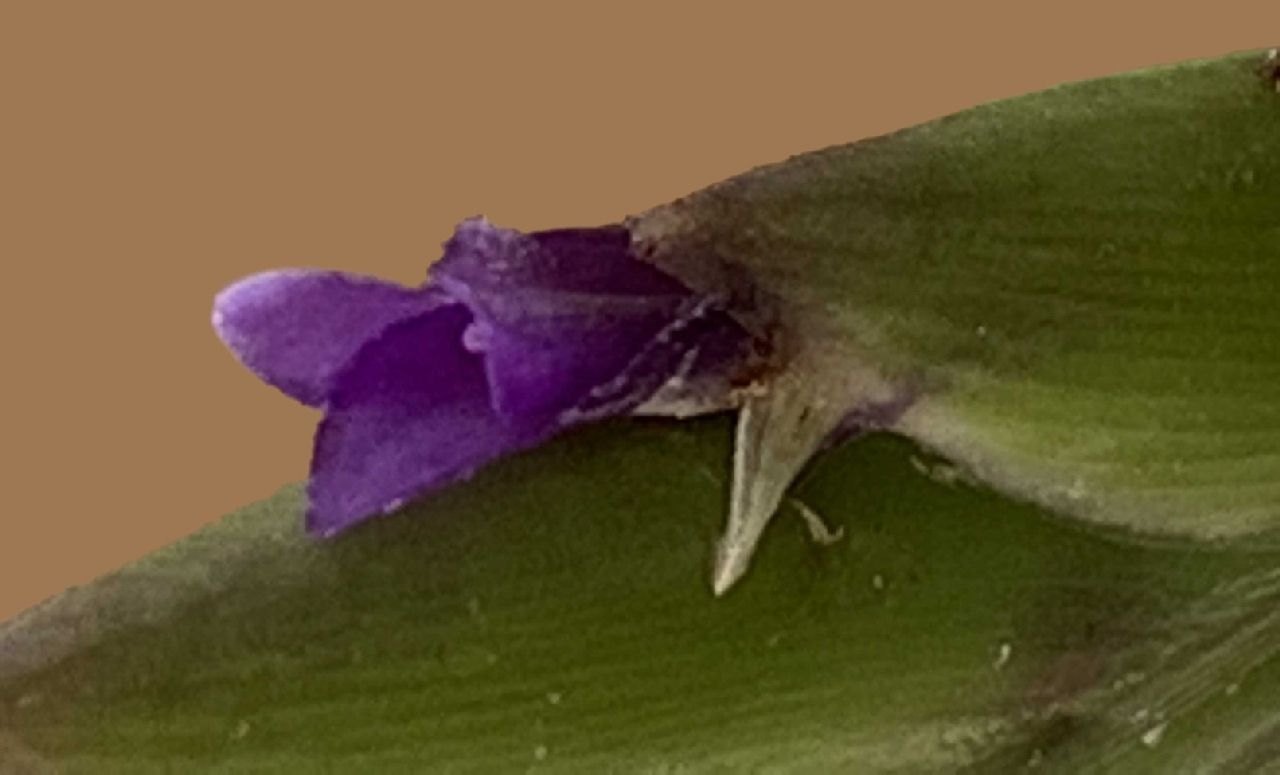
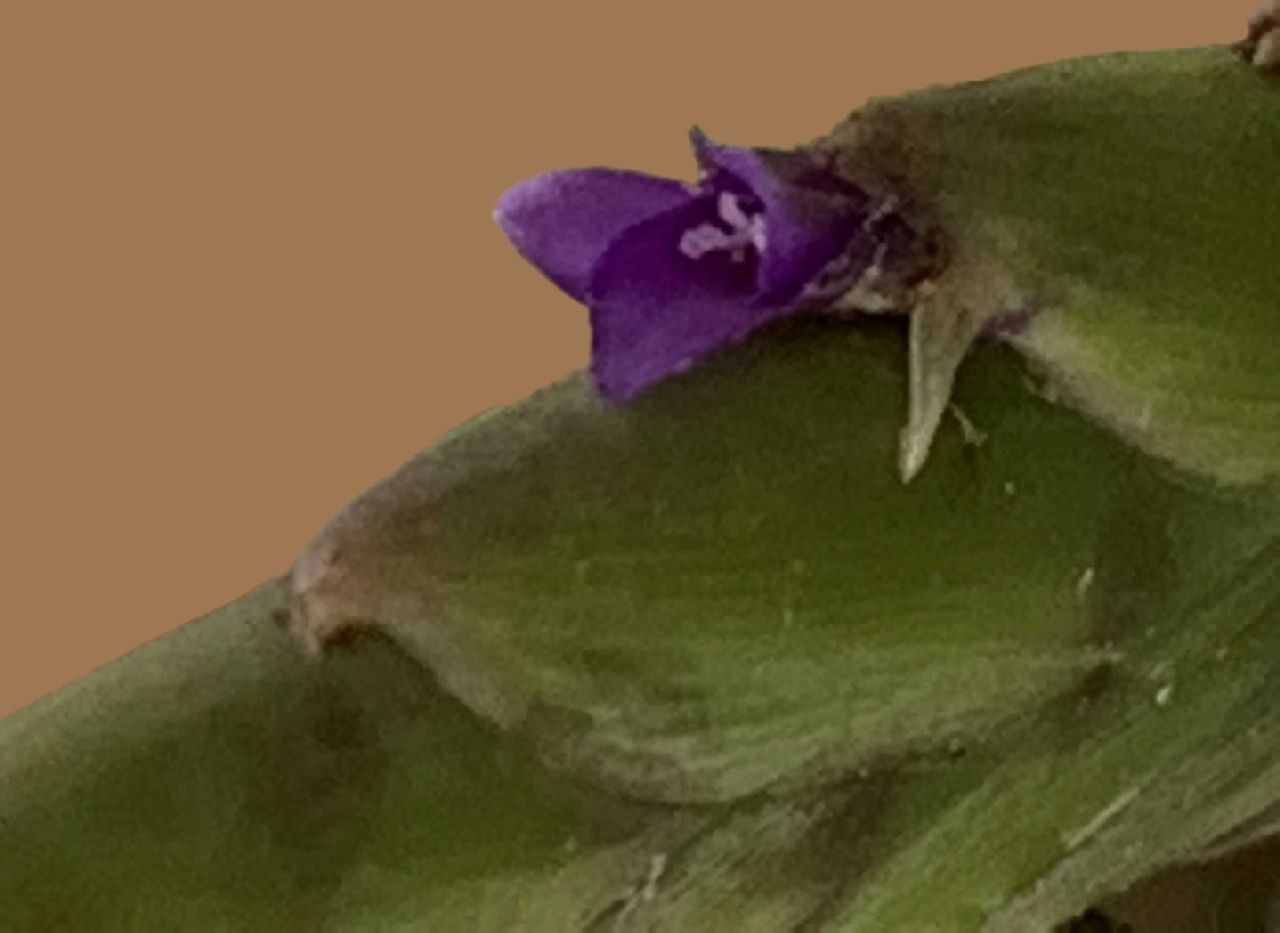
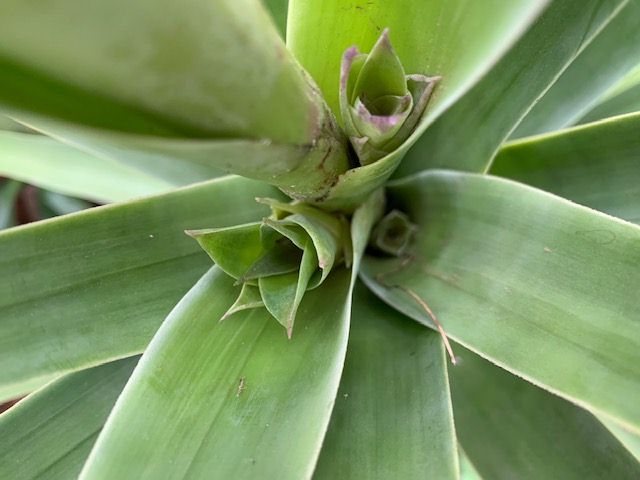
First I must state that identifying Tillandsias that take a long while to flower and therefore are few and far between is a great challenge because we cannot easily make comparisons with other living material.
This saga started out in May 2009 when Greg Aizlewood sent us all a photo of a huge ‘Tillandsia’ he had that was coming into flower. It was 2m in diam and the inflorescence plus scape was up to 3m! Not for mounting or pot culture! I feel sure he thought that the local experts must know the answer but we had work for him. Greg rose to the occasion and tried to key out his plant using the infamous Key. While doing so he had to butcher part of the inflorescence which he dutifully photographed. His view was that it was closest to Tillandsia sagasteguii and we sent details to Harry Luther and Walter Till. Harry suggested we look at T. platyphylla which can be made to fit but there were several anomalies. Walter Till suggested T. sagasteguii and although there are also anomalies such as length of floral bract this seems the closest.
Greg tells us he got his plant from Phil Hobbs many years ago. It appears that it only produced one offset and no seed production was reported. Phil Hobbs got her plant from Peter Tristram so we are back to the 1980’s. Peter imported his plant from Werner Krauspe in California. Interestingly, Kent’s catalogue for the same period shows T. platyphylla at the price of ASK (which makes me shudder!) but no reference to T. sagasteguii. Krauspe and Kent were getting their plants from different sources or the same source where the supplier was being shrewd!
We know that taxonomists take a great interest in type locality when trying to identify subsequent collections and even though we do not have this information it is nice to ponder.
We know that for Tillandsia platyphylla the type is Weberbauer 3888 (holotype B, F photo 11521), found on rocks, San Pablo to San Miguel, Cajamarca, Peru, 2 May 1904.
Its distribution is said to be saxicolous, 800 m alt, Cajamarca, Peru. and this is based on a collection by Rauh in Peru. Cajamarca, Chota: Rio Utcabamba Valley, Bagua Grande to Ingenio, 1970, Rauh 24572 (HEID, US).
This collection links to an article by Werner Rauh on “Notes on Peruvian Tillandsias” in J Brom Soc 24(6): 208. 1974, where we read:
“One of the largest species we found in the region of San Ramon is shown in Fig. 6. It is closely related to Tillandsia platyphylla and forms big rosettes. The long, narrow-triangular, densely brown lepidote leaves possess big dark brown sheaths; the scape is thick and stout, and the amply tripinnate inflorescence reaches a height of 2 m and more. The primary branches are long stipitate, the axis of the spikes is very thin and flexuous; the blue violet flowers are laxly arranged. T. platyphylla does not grow only on trees, but also on steep rocks at an altitude between 1,000 and 1,500 m.”
Alas we know no more, although we can see a photo of the plant.
On the other hand for Tillandsia sagasteguii we have Type. Sagastegui 3390 (holotype US, isotype TRP), on trees, near Santiago, Guzmango, Contumaza, 2600 m alt, Cajamarca, Peru, 3 Aug. 1960. where the distribution is only known from the type collection only. Here, either no further collections have been made or herbarium specimens not recorded.
Michael Romanowski and others collected in this area in 2003 near Chongoyape identified as T. sagasteguii by Peter Tristram. Collecting on his own in 2004 Michael found similar plants between Chilete and Magdalena but they do not link that closely with our plant. AND so we continue to ponder.